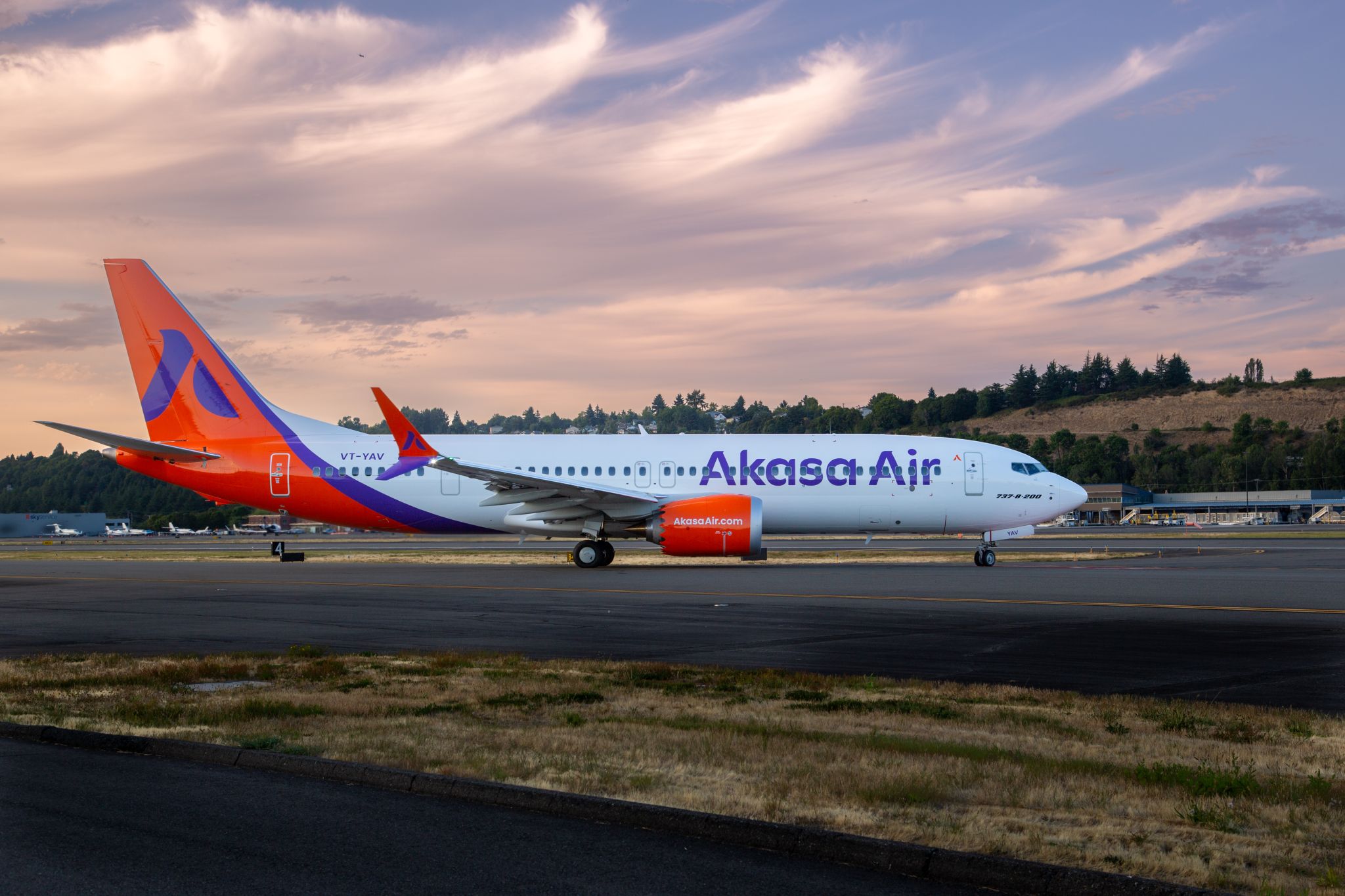
1690874935649
Boeing’s aim to stabilize 737/MAX production and deliveries (and that of other models…) hasn’t quite worked out in July. At 43 deliveries, the number was lower than that of June, when the airframer dispatched 60 aircraft to lessors and airlines. Boeing deliveries are still far from stable.
The focus is mainly of the two models that have been plagued by recent delivery delays: the 737/MAX and the 787. July saw one 737 P-8A and 32 MAX deliveries, with United Airlines taking nine, Southwest seven, and Ryanair four aircraft for the majority of deliveries. India’s Akasa Air became the second airline after Ryanair to take a (leased) MAX 8200 (main picture).
The July number compares to one P-8A and 48 MAX in June, one P-8A and 35 MAX in May, and one P-8A and seventeen MAX in April. April and May’s deliveries were impacted by rework required on correcting tailfin fittings on aircraft in inventory and production. For March, February, and January, the delivery split between 737 P-8s and MAX was 1/52, 1/24, and 35 (MAX only).
The numbers confirm that deliveries are well off the stable pattern of on average 35 per month that Boeing hoped to achieve by now before accelerating to a production rate of 38 per month. But as Chief Financial Officer Brian West said during the Q2/HY1 earnings call on July 26: “It will take some months before we will see a stable 38 aircraft coming off the line.”
Fuselage supplier Spirit AeroSystems said last week that it is producing 38 frames a month this August and will remain at this level until early 2024. This might include delivering frames from its Wichita inventory as the company is trying to catch up from the effects of the eleven-day strike in June/July over a new labor contract. Spirit said full-year deliveries to Boeing will fall behind by a margin of -20 to -50 frames compared to the planned schedule of between 370-390 in total.
Dreamliner
Dreamliner deliveries were also much lower than in previous months and stood at just four in July compared to six in June, eight in May, six in April, seven in March, three in February, and three in January. So there is no stability either here yet, with Boeing still having joint verification rework to do on multiple areas of the aircraft on in inventory. There were 85 of them by the end of June, so this must have come down to 81 by the end of July.
The 767-300F/KC-46 and 777F saw three deliveries of each family member in July compared to 4/1 in June, 3/3 in May, 1/1 in April, 1/3 in March, and 0/0 in February and January.
Through July, Boeing has delivered 309 aircraft, of which 249 737/MAX. The full-year target is 400-450 737/MAX and 70-80 Dreamliners.
Numbers by model
For the first time, Boeing shared numbers for each sub-variant of the MAX and 777X on its website (see table), including gross orders, deliveries, and unfilled orders. As is evident, gross orders minus deliveries are different from the numbers shown under unfilled orders. This difference is the ASC606 number for the backlog that might not materialize.
For example, the difference for the 777-8 is 35 aircraft and that for the 777-9 22, making 57 deliveries that are uncertain. For the yet to be certified MAX 10, the difference is 108 aircraft that are in the unconfirmed.
Orders
Boeing reported 52 gross orders for July, including a confirmation of the previously announced Dreamliner order from Saudia. The carrier ordered eighteen 787-9s and 21 -10s. There were twelve MAX orders, four from Luxair and eight from undisclosed customers. July saw no cancelations.
Forty aircraft previously listed under ASC606 Adjustments as deliveries were uncertain have moved to the confirmed backlog, including 42 MAX. Two Dreamliners entered ASC606. Year to date, Boeing has won 659 net orders, of which 467 are new and 192 re-entered the backlog from ASC606. The total backlog stands at 4.928 aircraft.
Views: 1




